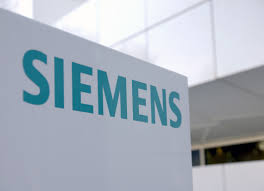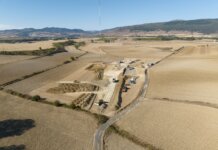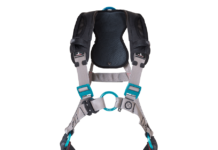Turbine supplier Siemens has released two product announcements that it says will aid in wind energy reliability and efficiency. In its first announcement, it says that it has, after extensive research and development over the last few years, launched a new generation of its aerodynamic turbine blade add-on, dubbed DinoTail.
Inspired by the trailing edge fringe of an owl’s wing, the add-on is purported to optimize the aeroacoustic performance of rotor blades, according to the company. The fringed structure at the trailing edge and small combs at the leading edge of owls’ wings are believed to mitigate the noise of the airflow – an effect Siemens has incorporated into the new DinoTail.
Moreover, Siemens notes, it now equips trailing edges with serrations and combs, in addition to vortex generators on the blade surface. This design creates fine vortices at the point where the fast air stream from above the blade meets the slower flow from below, significantly reducing the aerodynamic noise.
Siemens adds that serial production of this newly designed technology will begin soon and that the add-on can be used to increase energy production without increasing noise emissions at noise-constrained sites. It will largely replace the first-generation DinoTail for onshore turbines, Siemens says.
In the second announcement, Siemens says it is developing an economic storage technology, in partnership with the Technical University Hamburg Harburg (TUHH) and the urban utility company Hamburg Energie.
According to Siemens, the principle being tested encompasses the following: Excess wind energy is stored with an insulated cover after it has been converted to heat in rock fill. A steam turbine then converts the heat energy back to electricity when additional electricity is needed.
The company notes that this project has received research funding from the German Federal Ministry for Economic Affairs and Energy.
Siemens says it is currently operating a test set-up for the storage solution, named Future Energy Solution (FES), at Hamburg-Bergedorf. With scientists from the TUHH Institute for Thermofluid Dynamics, the company is researching how to make charging and discharging the store particularly efficient. The arrangement of the rock fill and the form of the surrounding insulating container are crucial, Siemens says – a fan uses an electrically heated airflow to heat the stones to the desired temperature; when discharging, the hot stones heat the air current, which then heats a steam boiler. The resulting pressure drives a generator via a steam turbine.
Researchers aim to test the complete energy conversion in spring 2017 – from electricity, to heat storage in the rock fill, and back to electricity. The full-size FES will be able to store around 36 MWh of energy in a container with around 2,000 cubic meters of rock. Via a boiler, the heat it contains will generate so much steam that a Siemens compact steam turbine will be able to generate an output of up to 1.5 MW of electricity for up to 24 hours a day, the company purports.
The researchers expect to generate an effectiveness of around 25%, and the concept has the potential for an effectiveness of around 50%, Siemens asserts.
Partner Hamburg Energie will investigate appropriate marketing options for the stored energy.




